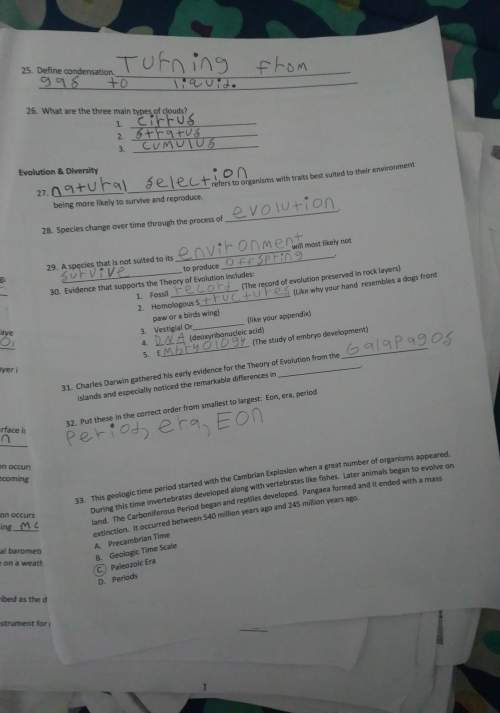
Oil is a powerful source of energy used for cars, machines, and many other purposes. While studying sources of energy that could replace the use of oil, a student thinks about solar power, wind power, nuclear power, and electric batteries. The students asks, "Which type of source will waste the least energy and provide the most energy in all situations?" Which best describes why a scientist would ask a different question than this one? O The question asks about subjective personal preferences regarding energy. O The question focuses on the objective measurements of amounts of energy. O The question has too wide of a focus, as though all situations can be studied at once. O The question is focused on the future and finding new answers about changing needs.

Answers: 1
Another question on Physics

Physics, 22.06.2019 00:20
Suppose that an electromagnetic wave which is linearly polarized along the x−axis is propagating in vacuum along the z−axis. the wave is incident on a conductor which is placed at z > 0 region of the space. the conductor has conductivity σ, magnetic permeability µ and electric permittivity ε. (a) find the characteristic time for the free charge density which dissipates at the conductor. (b) write the maxwell equations and derive the wave equation for a plane wave propagating in a conductor. (c) find the attenuation distance at which the incident amplitude reduces to e ^−1 of its initial value. (d) find the electric and magnetic fields inside the conductor. 8 (e) find the power loss per area of the incident electromagnetic wave at the surface of conductor.
Answers: 1

Physics, 22.06.2019 04:30
Ameter stick is pivoted at the 0.50-m line. a 3.0-kg object is hung from the 0.15-m line. where should a 5.0-kg object be hung to achieve equilibrium (the meter stick oriented horizontal and motionless)?
Answers: 1

Physics, 22.06.2019 10:30
Air is to be preheated by hot exhaust gases in a cross-flow heat exchanger before it enters the furnace. air enters the heat exchanger at 95 kpa and 20°c at a rate of 0.6 m^3/s. the combustion gases (cp = 1.10 kj/kg°c) enter at 160°c at a rate of 0.95 kg/s and leave at 95°c. determine the rate of heat transfer to the air and its outlet temperature.
Answers: 2

Physics, 22.06.2019 19:30
Emagnitude of the electrical force acting between a +2.4 × 10–8 c charge and a +1.8 × 10–6 c charge that are separated by 0.008 m is n, rounded to the tenths place.
Answers: 3
You know the right answer?
Oil is a powerful source of energy used for cars, machines, and many other purposes. While studying...
Questions




History, 31.07.2019 05:30

Mathematics, 31.07.2019 05:30










History, 31.07.2019 05:30

Mathematics, 31.07.2019 05:30

Health, 31.07.2019 05:30






